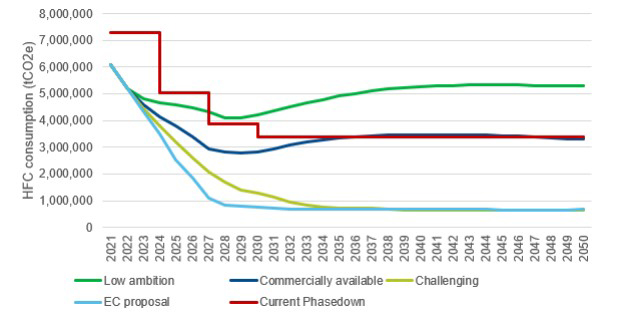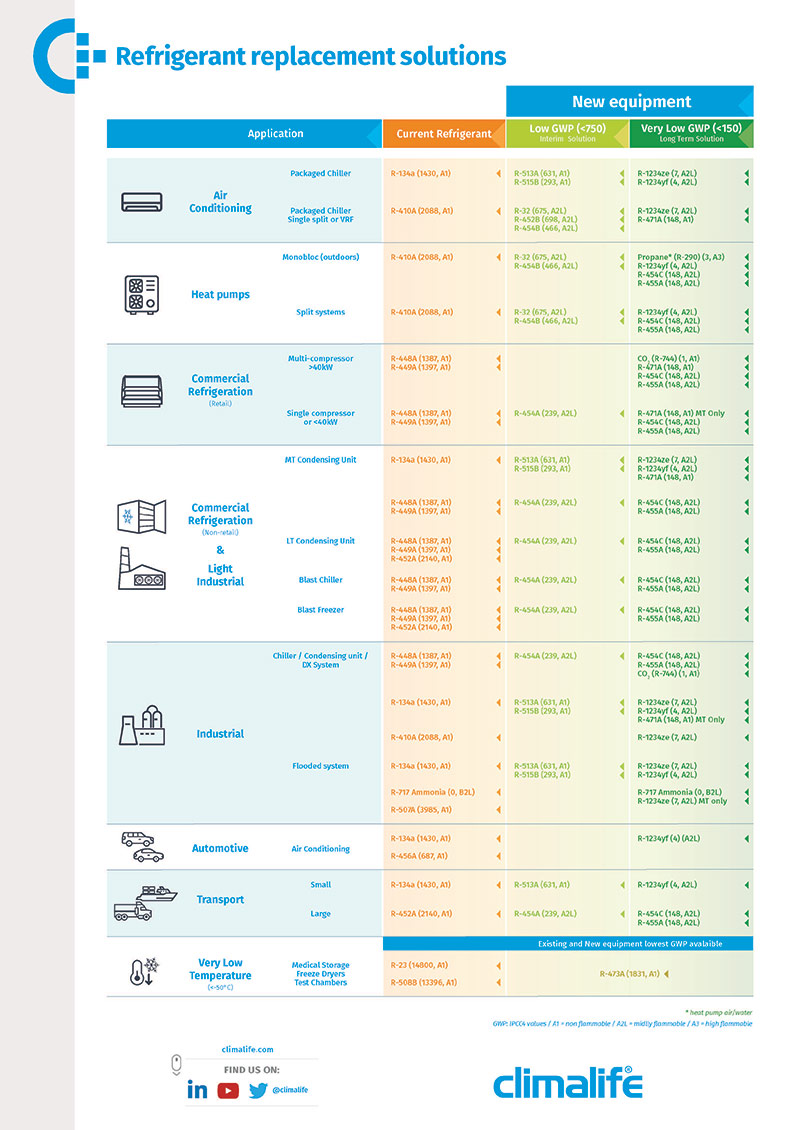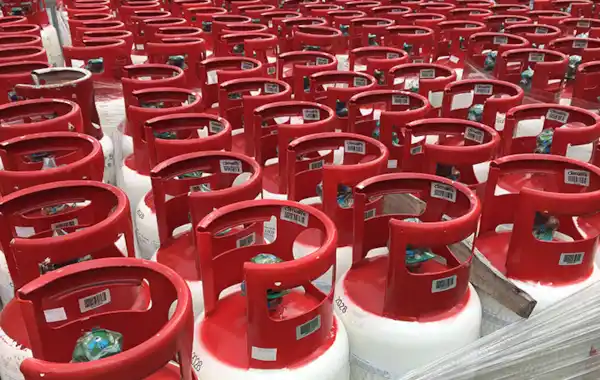07 March 2024
|

Are you confused about F-Gas or PFAS? Do you understand the longer-term implications of phasedown? Neil Roberts of refrigerant specialist Climalife discusses the information currently available and why it is enough to be making key decisions.
As we all know there are significant changes coming for our industry, but as of mid-February 2024, Great Britain (GB) is still in the process of developing its revised regulation for implementation in 2025 and the European Union (EU) is in the final stages of introducing a revised regulation.
It would be easy to just sit back and say let’s wait to see what develops, but this is a mistake as there is a lot of information available to enable strategic decisions to be made which will allow an orderly transition from higher GWP refrigerants to low (<750 GWP) or very low GWP (<150 GWP). So, what do we know?
European Union F-Gas Review
Even though GB no longer follows the EU F-Gas legislation, the EU review process is more advanced than the GB process and may have an influence on what the final GB regulation looks like. The final votes to approve the text of the EU revision were completed during January and publication in the EU Official Journal was scheduled for late February/early March, with the new regulation coming into force 20 days after publication.
The revision introduces several additional maximum GWP limits for new equipment being proposed for different applications, further GWP limits on refrigerants for maintenance of some applications and a very accelerated tonnes CO2 equivalents (TCO2e) HFC phasedown that will continue to reduce well beyond the current 2030 phasedown schedule. The current HFC phasedown schedule reduces the TCO2e to 21% of the 2015 baseline level by 2030, but the new proposals will reduce TCO2e to 5% of the baseline by 2030 with a complete phaseout of HFCs by 2050. HFO refrigerants such as R-1234yf and R-1234ze are not included in this phasedown and eventual phase out.
It is very clear that the new legislation will require the move to low or very low GWP options for new equipment sooner rather than later. For more on the EU GWP restrictions, information on other details and what refrigerant options are compliant with the new EU regulation, contact Climalife.

Figure 1 - GB F-Gas Review Report phasedown scenarios. Credit: F-Gas Regulation in Great Britain Assessment Report, December 2022, Department of Environmental Food & Rural Affairs
Great Britain F-Gas Review
The government department dealing with the F-Gas revision in GB is Defra. Defra has stated that there will be no new F-Gas legislation in GB until 2025 and have also publicly stated that “Any changes we might propose will be focused on the needs and opportunities specific to the GB market”.
Defra has held numerous public and private stakeholder meetings and are still defining the detail of the revised GB regulation. As yet there is no firm indication of what the GB regulation will say but a report published by Defra in December 2022 included the chart in Figure 1, giving different scenarios. It is clear from the discussions with Defra that the final decision will be challenging to the industry unless the move to low or very low GWP is taken sooner rather than later.
It is worth stating again that the GB F-Gas revision is completely independent of the EU process, any accelerated phasedown will not be introduced until 2026 and there is likely to be significant alignment with the EU regulation where it is thought the proposed measures are achievable. It is vitally important that the GB industry participate in the public consultation to ensure a workable proposal goes forward for the future legislation.
What about PFAS?
PFAS is an extensive subject, and we don’t have the space to go into too much detail here. For those who want the full picture there is an article and recording of a webinar available, but here are the key points.
PFAS has a definition that encompasses a very wide range of chemicals based on a particular chemical structure being present in the molecule. All fluorinated refrigerant molecules except R-23, R-32 and R-152a are included in the PFAS definition as well as many fluoropolymers used as seals, bearings, electrical windings, and electrical sensors, to name a few.
The main characteristics which could lead to restrictions are if the molecules are persistent in the environment (P), bio-accumulative (B) or toxic (T). None of the refrigerant molecules meet these criteria and reports published by the United Nations Environment Programme have stated that any breakdown products should not be considered for legislative purposes and have very minimal impact on the environment. Just as with the F-Gas regulation, the REACH legislation (which regulates chemicals including PFAS) in the EU and GB are completely independent and there is already a clear difference between the two processes.
In the EU, a proposal was drafted, and the European Chemicals Agency (ECHA) will decide if it is proportionate to the risks presented for each substance covered. This process is ongoing including stakeholder consultation which produced more than 5,600 comments from more than 4,400 contributors, and no decision is expected until 2024/25. In a worst-case scenario, the EU proposal would still allow use of F-Gases in existing equipment for 15 years after implementation but there could also be limitless derogations.
In GB, the Health and Safety Executive, working with the Environment Agency, have published a report which explains the GB approach which will group chemicals by the risk posed. The report recognised that compounds used in the RACHP industry are not persistent in the environment, not bio accumulative nor toxic and therefore posed a low risk and may receive a derogation. It is very likely in GB that F-Gas will be the dominant regulation.

In summary
Whilst the detail of the GB regulation is still unknown, there is enough information available to make sensible decisions. We know with certainty that the TCO2e phasedown will accelerate and that no-one can avoid moving to low or very low GWP options. Stalling a decision will just increase the pressure on the amount of F-Gas quota available and will likely increase the financial burden on end users.
In the EU legislation, any GWP limited bans on maintaining equipment over the next 25 years do not cover refrigerants with a GWP <750, so installing systems today using refrigerants with a GWP <750 is a valid strategy but continuing to install new systems using refrigerants with a GWP>750 may open up users to a situation where the expected equipment life is longer than the refrigerant availability.
One final consideration: energy efficiency. In many cases there is currently no legislation for this but there are many good reasons for ensuring the options chosen have good energy efficiency. Financially and environmentally, using the most energy efficient options makes sense and remember, the lowest GWP does not always mean the best energy efficiency and lowest total emissions.








